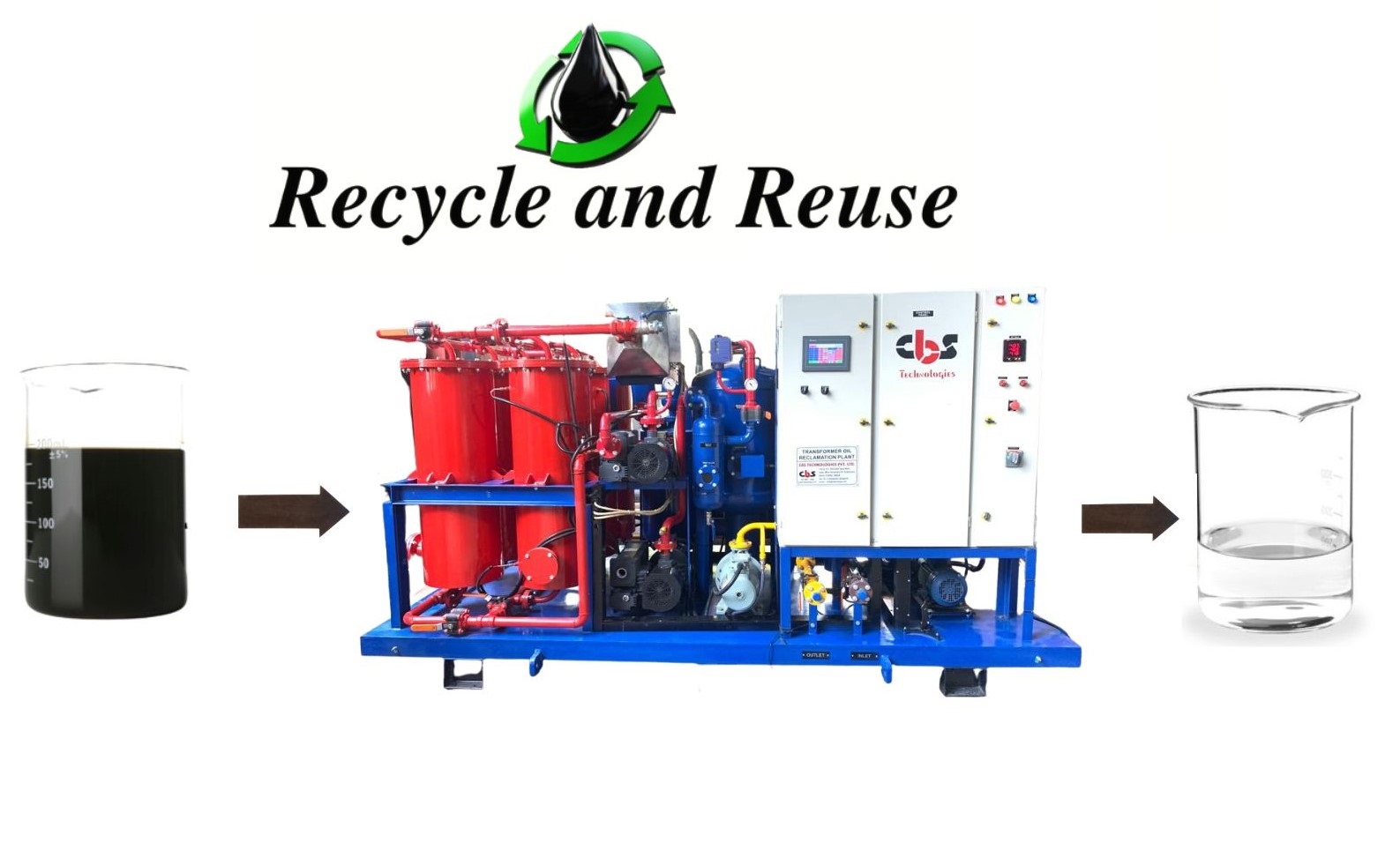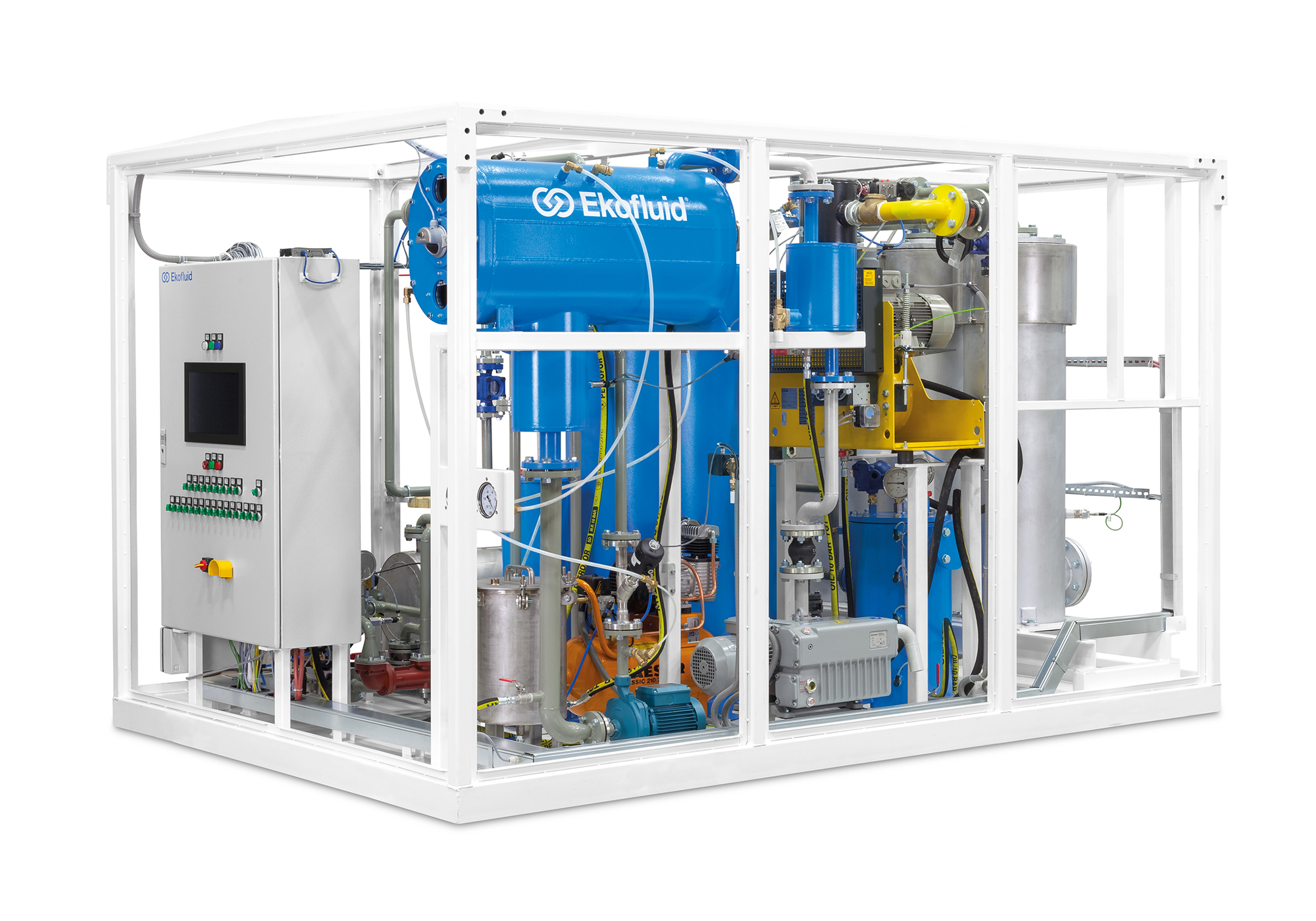Exactly How Regenerated Transformer Oil Prolongs Transformer Life-span
The function of transformer oil is crucial in guaranteeing the dependability and durability of transformers, offering as both an insulator and coolant. Regrowed transformer oil supplies an engaging service to improve these functions by efficiently removing dangerous pollutants that jeopardize performance. Through a meticulous regeneration process, the oil's dielectric buildings and thermal stability can be brought back, leading to considerable improvements in functional performance. Recognizing the ins and outs of this procedure and its wider effects for transformer upkeep exposes a path to not just expand lifespan however also optimize costs in energy management systems.
Relevance of Transformer Oil
Transformer oil plays a crucial duty in the effective operation of electric transformers. It primarily acts as a protecting tool, avoiding electrical discharges and making sure that parts operate safely under high voltage problems. The oil's dielectric homes are basic to maintaining the honesty of the transformer, as they decrease the risk of failings that could result in costly downtimes or disastrous occurrences.
Along with its insulating capabilities, transformer oil additionally operates as a coolant. As transformers operate, they produce warm that should be dissipated to avoid getting too hot and subsequent damages. The oil distributes within the transformer, soaking up and moving warm away from vital elements, thus keeping ideal operating temperature levels.
Additionally, transformer oil works as an obstacle against moisture and contaminants, which can compromise the efficiency and longevity of the transformer. Its chemical residential properties help in reducing the effects of acids and other byproducts that may form in time, adding to the general health and wellness of the electric system.
Advantages of Regenerated Oil

Additionally, regenerated transformer oil has a lower level of impurities, including particles and pollutants that can weaken efficiency. This purity not only boosts the oil's thermal conductivity but also prolongs the functional life-span of transformers by lessening overheating dangers. The enhanced thermal security of restored oil makes sure constant efficiency also under high operating temperature levels, which is vital for keeping transformer effectiveness.
One more advantage is its ecological effect. Restored oil advertises sustainability by lowering waste and the requirement for new oil production, thereby reducing the carbon impact connected with transformer maintenance. Transformer Oil Regeneration Plant. Moreover, the long life of restored oil translates to lower upkeep costs with time, as less oil adjustments and much less constant equipment downtime are called for.
Process of Oil Regeneration
The regrowth of transformer oil entails an organized procedure developed to bring back the oil's initial properties and improve its efficiency. This process usually begins with the removal of the made use of oil from the transformer, which is then subjected to various filtration methods.
The primary step in the regeneration procedure is the filtering, where solid impurities such as sludge, metal, and dirt bits are gotten rid of. This is commonly complied with by vacuum cleaner distillation, which helps to remove dampness and unstable compounds, thus enhancing the oil's dielectric toughness.

Effect On Transformer Efficiency
Bring back the homes of regenerated transformer oil dramatically influences the total performance of transformers. Improved dielectric strength is one of one of the most important benefits, as it allows for much better insulation and reduces the likelihood of electrical failure. This improvement causes a more secure operation under high voltage problems, eventually resulting in raised performance.
Additionally, the removal of contaminants and degradation products during the regrowth process decreases the threat of getting too hot. Cleaner oil assists in much better warm dissipation, which is important for keeping ideal operating temperature levels. As a consequence, the thermal efficiency of the transformer is boosted, enabling higher lots without endangering dependability.
Additionally, the chemical stability of restored oil guarantees long term operational life. It stands up to oxidation and degradation, lowering the frequency of upkeep interventions and oil substitute. This stability not only adds to enhanced performance however also aligns with sustainability goals by lessening waste.
Future of Transformer Upkeep
As developments in technology proceed to reshape the landscape of electric design, the future of transformer upkeep is positioned for substantial transformation. The assimilation of clever technologies, such as IoT sensing units and anticipating analytics, makes it possible for real-time tracking of transformer health, improving the capacity to preemptively deal with issues before they intensify right into major failings. This aggressive strategy not just optimizes operational effectiveness however likewise expands the lifespan of transformers.
In addition, the application of expert system (AI) in data analysis click reference permits for even more accurate fault discovery and diagnosis. By leveraging artificial intelligence algorithms, maintenance groups can identify patterns in operational data that human experts might overlook, bring about more enlightened decision-making.
In addition, the adoption of environment-friendly practices, including using regenerated transformer oil, is readied to redefine maintenance procedures. This lasting technique not just lessens ecological impact yet also improves the total health of the transformer.
Lastly, the change towards automation in upkeep procedures is expected to simplify procedures, decrease downtime, and reduced costs. As these technologies remain to evolve, the future of transformer upkeep will definitely end up being a lot more effective, trusted, and sustainable, Bonuses guaranteeing the stability of essential electric facilities.
Final Thought
The use of regenerated transformer oil considerably boosts the functional longevity of transformers. By efficiently restoring dielectric strength and thermal stability, this oil plays a vital function in mitigating dangers related to overheating and oxidation. The regrowth process not just removes damaging impurities however also lowers upkeep regularity and oil replacement costs. Inevitably, the adoption of regenerated oil stands for a critical development in transformer maintenance, guaranteeing optimal performance and sustainability in the monitoring of electrical framework.
The role of transformer oil is essential in making sure the integrity and long life of transformers, offering as both an insulator and coolant.Transformer oil plays a critical function in the effective procedure of electrical transformers. Restored oil advertises sustainability by decreasing waste and the demand for new oil production, consequently lowering the carbon footprint connected look at this website with transformer upkeep.Restoring the properties of regenerated transformer oil dramatically influences the overall performance of transformers.The usage of regenerated transformer oil significantly boosts the operational durability of transformers.